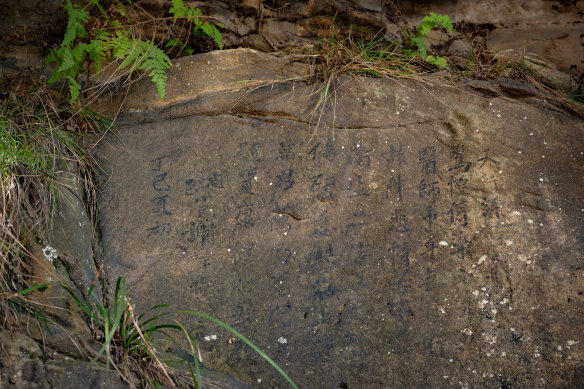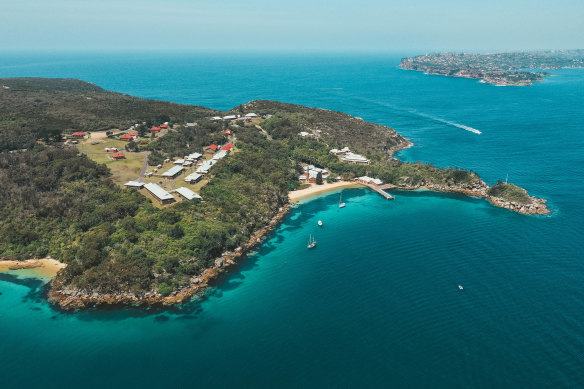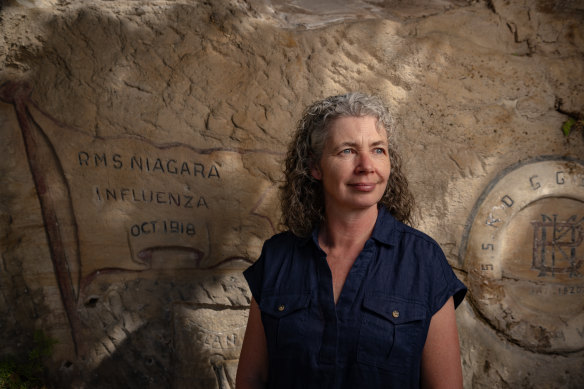The Chinese characters painted on the rock at the old quarantine station at North Head 107 years ago are slowly fading from view.
“I had no leisure time for ‘hygiene’,” the writer despairs. “To study the consequences is like looking at the horizon”.

The inscription from Xie Ping Di at the old quarantine station at North Head.Credit: Wolter Peeters
The author of the 107-year-old historical “graffiti”, Xie Ping Di, was one of more than 850 immigrants to have left their mark at the station over its 156-year history.
About 13,000 passengers and crew from 580 “infectious” ships were quarantined at North Head from 1828.
Those stranded etched their names and messages into rocks, walls and furniture across the 30-hectare site, creating a collection of non-Indigenous inscriptions that academics say is the largest of its kind in Australia.
“J. Dawson landed here to perform quarantine on the 11th September AD 1835 with his wife Emily, 3 sons and 5 daughters from Lincolnshire on the ship Canton of London in the reign of William IV of Britain and Ireland,” reads the earliest inscription, now hidden behind vegetation. The family’s ship had to quarantine because of smallpox on board.

Ships with infectious diseases on board had to stop at the quarantine station.Credit: Q Station
Another marking is for a young girl who was separated from her family and forced to quarantine alone, with suspected cholera: “Deirdre Neal Smith aged 14 SS Strathmore 1962.”
Deidre was eventually cleared of the disease and allowed to rejoin her worried family in Canberra.
“They give you windows into so many people’s lives,” Q Station interpretation officer Helen Drew said. “For some, recording the name of their ship and the date they were here is what they wanted to be known, but for others, it was much more personal.

Q Station interpretation manager Helen Drew with an inscription marking the first ship to be quarantined with Spanish Influenza.Credit: Wolter Peeters
“They were quarantined here for a number of weeks, so they had time on their hands.”
The rock engravings will eventually erode but Q Station, which runs the site, will use a new $29,000 federal heritage grant to repaint about a dozen of the coloured markings near the station’s wharf, so they can tell their stories for a little longer.
“There are different threats to the inscriptions, some of which we can manage, but some of them we can’t, like water and sun damage to them. It’s just going to be ongoing. They are going to disappear,” Drew said.
“The idea of repainting them is to just provide greater interpretation and highlight their significance for the time that we do have them.”
Her team will determine which inscriptions to conserve based on “the significance of the inscriptions and the stories they can tell”. The restored markings will form part of a broader immersive historical experience for visitors.
The grant is one of 13 awarded this year as part of the Australian Heritage Grants program – a $33 million program that has been running since 2018.
“North Head Quarantine Station helped to protect Australia from disease for about 150 years and this critical funding will help conserve a piece of Sydney’s incredible history,” Environment Minister Tanya Plibersek said.
The next round of funding opens this month.
Start the day with a summary of the day’s most important and interesting stories, analysis and insights. Sign up for our Morning Edition newsletter.